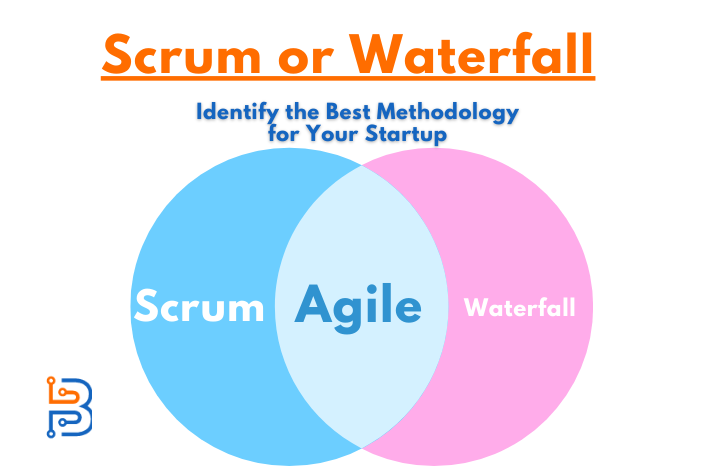What are the Phases of Work on a Scrum Board?

Scrum is a well-liked agile project management paradigm that has found considerable acceptance in the field of software development and elsewhere. The Scrum board, a visual depiction of the work that assists teams in planning, tracking, and managing their projects effectively, is one of the significant tools used in the Scrum methodology. The Scrum board is typically divided into columns that represent different stages of the project, such as “To Do,” “In Progress,” and “Done. The team can more effectively see the status of each task due to this, which promotes transparency and teamwork. The Scrum board is a flexible and adaptable tool for project management because it can be modified to meet a project’s unique requirements. The project’s success depends on each of the Scrum board’s stages.
This blog post will review the steps required to work on a Scrum board and how they affect the overall project management procedure.
What are the Phases of Work on a Scrum Board?
Here, we will explain the stages and process of work on a scrum board.
Daily Standup Meetings
Daily Standup Meetings, or Daily Scrum, are crucial to the Scrum framework. These brief, daily meetings are designed for the Scrum team to synchronize their work, discuss progress, and plan for the day ahead. Team members typically answer three critical questions during these meetings: What did I accomplish yesterday? What task shall I tackle today? Are there any barriers or hindrances in my path? Daily standup meetings keep the team on task and point out obstacles that must be removed immediately.
Testing and Quality Assurance
The quality of any software development project is crucial. To find and address any flaws or problems, the product goes through thorough testing and quality assurance throughout this phase. Various testing techniques, including functional, performance, and security, are used during this phase. The program must adhere to the necessary standards and perform correctly in various situations. Quality assurance operations also encompass analyzing and enhancing the development process to avoid future problems and improve the product’s overall quality. The product will be tested manually and automatically at this stage to ensure it complies with the required quality standards.
Backlog Refinement
Backlog refinement is an ongoing phase where the Scrum team, including the product owner and development team, collaboratively reviews and refines items in the product backlog. This process helps ensure the backlog remains up-to-date, well-prioritized, and ready for upcoming sprints. It involves breaking down more significant user stories into smaller, manageable tasks, clarifying requirements, and estimating effort. Practical backlog refinement is essential for maintaining a healthy backlog and ensuring the team’s productivity.
Burndown Charts
Burndown charts are visual tools for tracking the sprint’s progress. This phase involves creating and updating burndown charts, which display the amount of work remaining in the sprint over time. Burndown charts are valuable for monitoring if the team is on track to complete their committed work by the end of the sprint. The team’s speed is visible in real-time on these charts, which helps in data-driven sprinting adjustment decisions.
Read Also: What Is Agile Marketing?
Retrospective Meetings
Each sprint concludes with a phase called the retrospective meeting. The Scrum team considers their recent work and procedures during this period. Team members identify actionable things to improve upcoming sprints while discussing what went well and what may be enhanced during the discussion. Retrospectives are essential to continuous improvement because they let the team optimize their procedures and respond to shifting conditions.
Product Backlog
The first phase on a Scrum board is the Product Backlog. This is the repository for all the tasks, features, and user stories required to complete the project. The items in the Product Backlog are prioritized based on their importance and value to the product. The product owner typically manages this phase and continuously refines and updates the backlog based on feedback and changing priorities.
Sprint Planning
Sprint Planning is the phase where the Scrum team selects a set of items from the Product Backlog to work on in the upcoming sprint. During this phase, the group discusses the requirements, estimates the effort required for each item, and commits to completing a certain amount of work. This phase sets the direction for the sprint and is crucial in ensuring that the team’s efforts align with the product’s goals.
Sprint Backlog
Once the items are selected during sprint planning, they move to the sprint backlog. The sprint backlog is a subset of the product backlog, consisting of the tasks and user stories the team has committed to completing in the current sprint. This phase provides a clear focus for the team during the sprint, allowing them to concentrate on achieving their sprint goals.
In Progress
The “In Progress” phase is where the actual work gets done. Team members pull tasks from the Sprint Backlog and move them to this column when they start working on them. It’s a visual representation of the work actively tackled during the sprint. Tasks in this phase are typically tracked and updated regularly to reflect progress.
Review and Demo
At the end of each sprint, the Scrum team holds a sprint review and demo. In this phase, they demonstrate the completed work to stakeholders and collect feedback. The sprint review and demo allow stakeholders to provide input on the product and make any necessary adjustments. It allows the Scrum team to ensure that the work aligns with the stakeholders’ expectations and make any necessary improvements before moving forward. This step helps ensure the product meets the customer’s requirements and allows for necessary adjustments before moving forward.
Done
The final phase on the Scrum board is “Done.” Tasks or user stories that have passed all necessary tests and meet the acceptance criteria are moved to this column. When an item reaches this phase, it is considered completed and ready for deployment.
The Scrum board is a dynamic tool that constantly changes throughout the sprint. Tasks and user stories move from one phase to another as the team works on them. The visual representation of the board makes it easy for team members to see the progress of the sprint immediately.
Scrum boards are not limited to software development but can be adapted to various industries and projects. The key is maintaining transparency, continuous communication, and collaboration among team members to ensure everyone is on the same page regarding the project’s progress and goals.
Conclusion
In conclusion, the phases of work on a Scrum board provide a structured approach to managing projects agilely and iteratively. Scrum teams can plan, execute, review, and adapt their work efficiently to create products that are valuable to their customers by following these phases. This iterative process promotes adaptability and ongoing development, eventually boosting customer satisfaction and increasing market success. The Scrum board is a powerful visual tool that helps teams keep their projects on track, respond to changes quickly, and ensure the quality of their deliverables.






